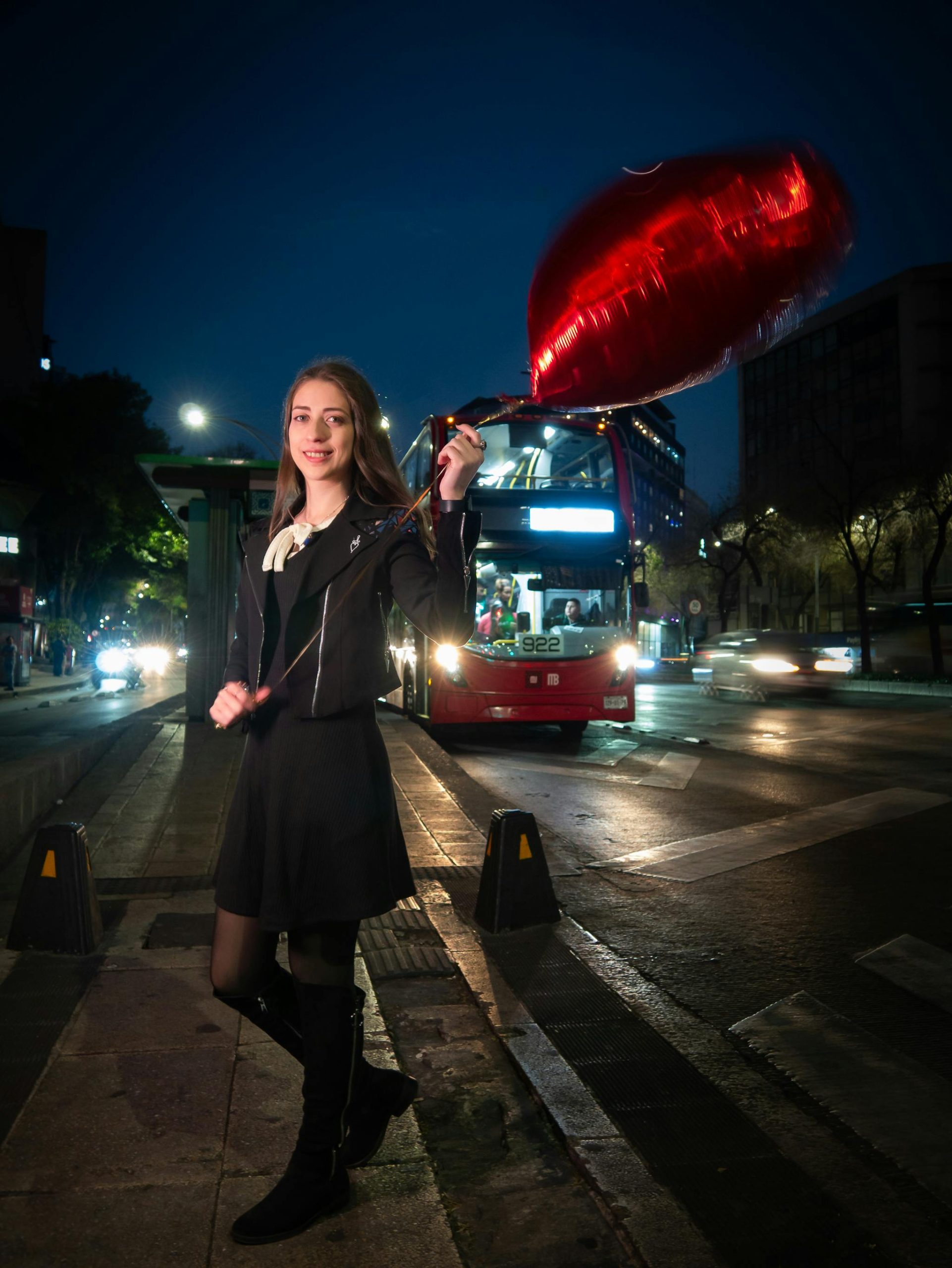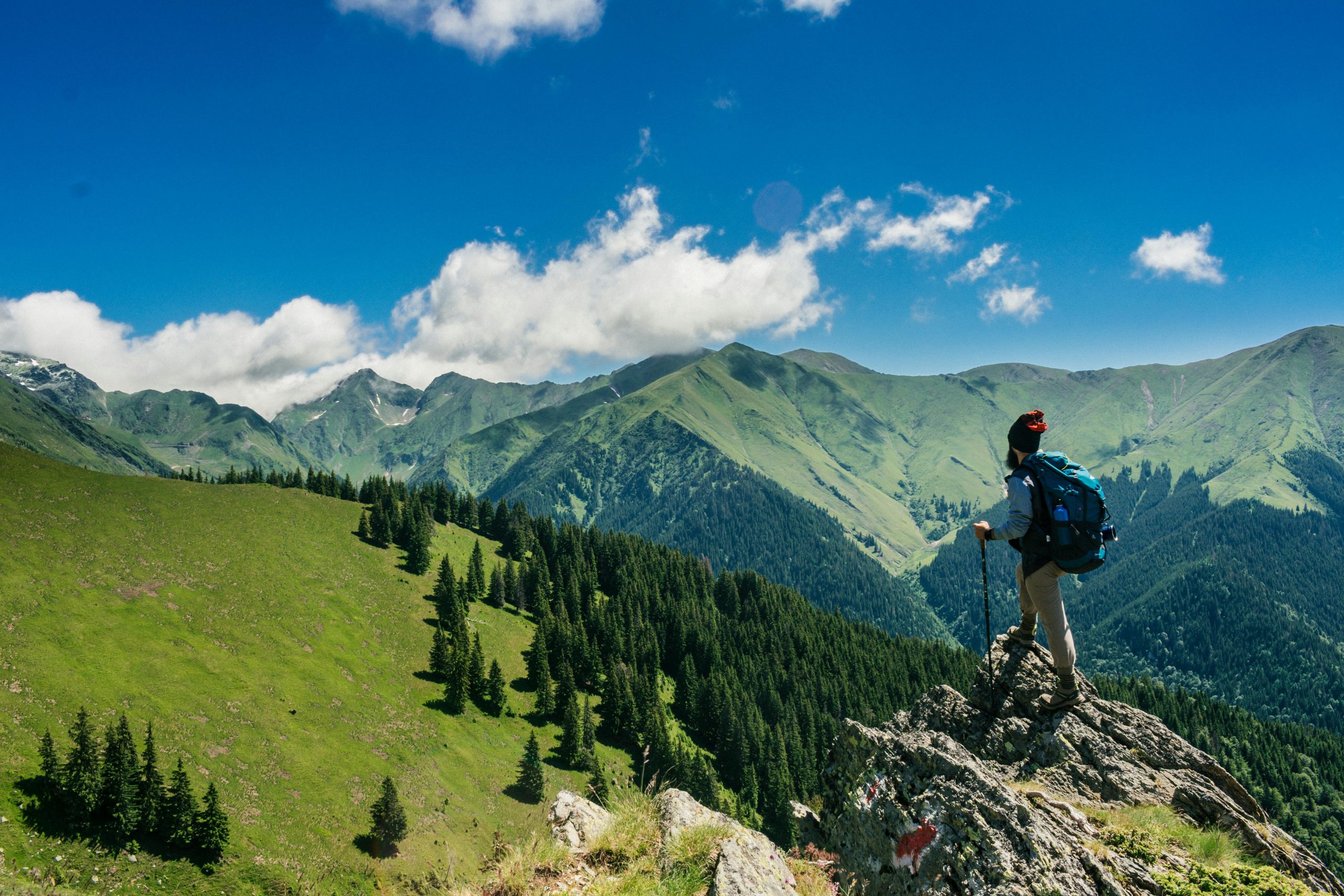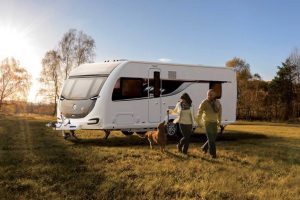Top 10 Travel Trends for 2025: The Fastest-growing traveler segments and how hotels can attract them
As the travel industry changes rapidly, so too do travel preferences and habits.
Staying on top of the latest travel trends is beneficial for any property, whether you manage a hotel with 50 rooms or a B&B. You can improve your marketing strategy and attract more customers.
Immersive experiences and sustainable stays will dominate travel trends in 2025. Guests are not just searching for a bed to sleep in—they want authentic, meaningful moments.
This blog will explore the ten most popular tourism types for 2025 and provide concrete tips on how to appeal to every kind of traveller. You can’t please everybody, but there’s a high chance that some of these segments will perfectly match your property.
What is a traveller segment?
Travel segments include ecotourism, solo travel, wellness tourism, and other forms of travel. The main reason for the traveller’s trip and the experiences or activities they want to have can help distinguish these tourism types.
Travellers have different travel purposes and preferences that influence the type of accommodation, service and destination they choose. Understanding your target segments will help you attract more guests and provide tailored experiences that enhance customer satisfaction.
Attracting diverse traveller segments with a smart strategy
Independent hotels are able to specialize and change their focus. Brand standards do not restrict you so that you can create unique and highly personalized experiences.
This ability to customize your offer gives you an edge over competitors, whether you are appealing to remote workers, solo travellers, or wellness seekers.
The targeting of specific tourism segments can be done:
- Marketing messages with greater effectiveness: Create messages that are more persuasive by addressing specific types of guests.
- A stronger brand identity: Stand out in a crowded marketplace by positioning yourself as a go-to choice for a specific type of traveller.
- Maximized revenue: Customized packages, extras, and complete experiences justify higher prices, increasing your earnings per room.
- Stable occupancy rates: A flexible and diversified targeting strategy will help you generate bookings all year round.
- Improved guest satisfaction: Modern hotel guests are more likely to be satisfied with their stay if they receive a variety of perks and experiences. This can result in positive reviews and repeat bookings.
You don’t have to sacrifice your identity to cater to certain tourist segments or exclude other guests from your property. Use the tips from this blog to improve your core positioning and expand your appeal.
1. Ecotourism and sustainable travel
As climate change concerns and awareness grow, an increasing number of travellers are choosing sustainable travel options. Gen Z, Millennials and eco-conscious Gen Z are the ones leading the charge for sustainable tourism. It is important to reduce the negative impacts of tourism both on the environment and the destination.
The government and booking platforms encourage accommodations to adopt environmentally friendly practices. Booking sites are now highlighting sustainability credentials to boost properties’ visibility.
What travellers want:
- Eco-friendly certified properties
- Transparency of sustainability practices
- Fly-free holidays closer to home
- Transportation options with low emissions
- Experiences that are carbon-neutral (like hiking, cycling and other outdoor activities)
- Local and organic food
- Positive impact of local community activities
Attracting these travellers:
- Solar panels, waste reduction initiatives, water-saving measures, community involvement—even small changes can make a difference.
- Promote your sustainability efforts through social media, your website and booking platforms.
- Get certified. Eco-certifications like Green Key or EarthCheck, Ecostarts, Ecoglobe, Ecostarts, or local initiatives like the EU Ecolabel will give you credibility and help you stand out from competitors.
- Partner with local businesses and communities to offer authentic cultural products and services.
- Promote eco-friendly packages. For example, you can include rates such as a zero-km brunch or rental bikes. Give your packages a creative name like “The Nature Lover’s Package”.
2. Travel for work or pleasure?
According to Accor, Brits searched for ‘working nomadic’ 82% more often in 2024 than they did the previous year.
So-called digital nomadic workers are using their paid leave more creatively to spend weeks or even months abroad. Employers have become more flexible, and some even arrange workstations to boost job satisfaction. In response to this growing trend, many countries issue visas for digital nomads.
The new travel style allows individuals to take a vacation without feeling guilty about their work. It also helps families combine school holidays with work schedules. Bleisure travellers, who are characterized by a long Length Of Stay (LOS), can be a great segment for filling rooms and increasing your profits.
Workation is a combination of two things: a worthwhile destination and accommodations equipped to allow remote working. Trips can be split into two days—one for working and the other for relaxing—or they can be extended to include leisure time.
What travellers want:
- Fast and stable internet
- Quiet yet inviting workspaces
- Meeting rooms and coworking spaces
- Wellness Activities
- Enjoy the outdoors with ease
Attracting these travellers:
- Offer corporate rates on your website and work with OTAs who focus on group bookings.
- Ensure that your home or business has reliable high-speed Internet with WiFi and wired connections.
- Your website and booking channels should highlight the key amenities, such as fast WiFi and well-equipped outdoor spaces.
- Workation rates and packages such as “Digital Nomads” or “Work From Hotel” offer discounted long-term bookings or group bookings. They also include (co-)working facilities, lunchroom service, and access to the spa/gym. As an additional value, offer a computer monitor in the room.
- Packages “Work + Play”, which include off-site activities like guided tours or museum visits in the afternoon.
- Do you want to reserve your weekends for guests of other types? To encourage bookings, offer attractive specials during the week.
- Write blogs or guides: “Why remote workers like [your destination] or “How to work from our location”.
3. solo travel
Solo travel was once a niche that adventurers sought out for unique experiences. But in 2025, it has become a real movement. Solo travellers don’t wait for the perfect travel partner, but they embrace the freedom, spontaneity, and empowerment that come with exploring the globe alone.
Social media content creators play a major role in the growth of this traveller category, inspiring them through TikTok and Instagram videos. Thanks to the safety tips and recommendations of influencers, women are also becoming more interested in solo travel.
What travellers want:
- Enjoy local experiences that are authentic but also fun on your own
- Accommodations with a sense of security
- Shared spaces in hotels allow travellers to connect
- Meeting people without booking group activities or trips (e.g. communal breakfast) is possible. communal breakfast)
- Book flexible bookings
- Rates that are affordable without the Single Supplement Fee
Attracting these travellers:
- Offer single occupancy-free rate plans.
- Promote “Self-Love packages” that are specifically designed for solo travellers. Including welcome gifts, spa treatment, personalized local guide, etc. ).
- Organise and promote group events and activities where guests with similar interests can meet (e.g. group dinners or taste tests, workshops, guided tours, trivia nights, etc.). ).
- Highlight any solo-friendly facilities (on-site or nearby) on your website and in other channels.
- Include guest feedback and reviews in your solo itineraries and safety tips.
- Share tips and recommendations for solo travellers on social media or through other campaigns. Highlight why your accommodations are the best option for them.
- You can dedicate a page on your website or package description to solo travellers. This will allow you to highlight the amenities and experiences unique to this segment.
- In your photos and communications, convey a feeling of security, warmth and assurance.
- Present yourself or your team as a host who is always available and ready to offer local insight and recommendations.
4. Agritourism and rural getaways
In a world that is becoming increasingly connected digitally, travelers are increasingly turning to the countryside for a place to disconnect. This type of tourism focuses on sustainability and connection to nature. Agritourism, whether it’s an overnight stay at a restored farm or a weekend spent on a vineyard, offers peace that is extremely rare in today’s world.
Agritourists don’t simply want to escape the city; they are actively looking for authentic, hands-on, and grounded experiences. Agritourists are keen to get involved in farm activities and enjoy farm-to-table meals. They also want to learn about rural lifestyles and traditions. The goal is to find meaning in rural life and support local producers while recharging.
The global agro-rural tourist market is expected to grow steadily between 2025 and 2035 due to the growing demand for sustainable travel, interaction with local communities, and experiential travel.
What travellers want:
- Nature retreats, farm stays and vineyard visits
- They can enjoy quiet, scenic areas where they can immerse in nature
- Picnics and stargazing are two of the most relaxing activities.
- Farmers’ markets, local produce, farm-to-table dining, and local artisans
Attracting these travellers:
- Offer authentic experiences, such as fruit picking, farm workshops, winery tours, or taking care of farm animals.
- Offer workshops, tastings and dinners in collaboration with local artisans.
- Highlight your rustic charm through pictures and descriptions.
- Your property and your rooms should be positioned as a quiet, relaxing environment.
- Use social media to promote local events, festivals, and activities.
5. Cooling Off
You might think of tropical beaches and resort pools when you imagine summer vacations. In 2025, more and more travellers will rethink their summer getaways. Colocation is a growing travel trend in which vacationers actively search for cooler climates and higher altitudes. Climate change has led to more people choosing milder, temperate locations instead of hotspots that are usually drenched in the sun.
Iceland, Scotland, Finland, and parts of Canada are becoming more popular due to their naturally cool summers. Google Trends reported a 3000% increase in searches last year for “cooler holidays”. This is due to the record-breaking heat waves of the past couple of years. This trend is a good opportunity for those who live in milder climates during the summer.
What travellers want:
- Enjoyable climates such as mountains, forests and northern coasts
- Natural swimming areas, hiking trails and lakes with fresh air
- Enjoy nature, movement and relaxation in the cool without the heat
- The less-crowded and lesser-known places
Attracting these travellers:
- Packages such as “Coolcation”, “Breezy Summer”, or “Coolcation”, which include indoor and outdoor experiences, are available.
- Offer attractive off-season packages and rates if your destination experiences hot summers.
- Promote attractions and activities that will allow guests to escape from the heat.
- When you describe your rooms and book them, be sure to mention that your rooms are air-conditioned.
- Promote the “cool factor” of your destination: altitudes, breezes, shaded areas and swimming facilities.
- Promote the benefits of colocation by positioning your property as a perfect location.
- To inspire guests, create seasonal guides, blogs, and social media posts. For example, feature breezy hikes, alpine picnic areas, or nearby forests.
6. Sports tourism
Sports tourists combine their passion for sports and travel, whether they attend a match live, participate in a marathon on their bucket list, or cycle scenic routes. It’s more than just fitness; it’s also about shared experiences and purpose.
After the pandemic, travel habits have changed to reflect a renewed emphasis on fitness, health and an active lifestyle. Millennials dominate this booming travel industry, and Gen Z. Fitness vacations are on the rise as more people sign up for marathons, triathlons, and cycling events.
Sports events continue to attract both amateur athletes and spectators. Many fans are willing to travel across borders to attend events, such as the Olympics in Paris and Formula 1 races throughout Europe. These trips have become full-fledged vacations.
What travellers want:
- Proximity to sporting events, training areas and trails.
- The amenities that are designed for athletes include healthy meals, early morning breakfasts, wellness services, and recovery services.
- Travel around events with flexible booking.
- Sports facilities, equipment rentals, and training programs
- Social, team-based experiences
Attracting these travellers:
- Collaborating with local sporting events can create experience-rich packages. Optionally, transportation to and from the event location or themed merchandise can be included.
- Special offers or discounts can be offered to nearby spectators at sporting events.
- Bookable extras and tailored amenities like healthy lunches to go, nutritional snacks, gym access, and recovery services.
- Your website, social media and OTA listings should feature healthy food options.
- Be sure to know the sporting calendar so that you can promote it through different well-timed communication channels and campaigns.
- A section on your website can be dedicated to local sports events and activities.
7. Pop-culture tourism
Pop culture influences not only what we watch but also the destinations that tourists choose. Tourism in pop culture-related destinations has never been more popular. Millennials and Gen Z are driving the trend, and Reels and TikToks fuel it.
Famous filming locations have long been popular tourist destinations. However, in recent years, this trend has spread to include music festivals and other pop-culture references. According to a recent survey by Accor, 24% of Brits are eager to visit the actual location where their favourite movie or TV show was filmed.
This sudden rise in popularity can be attributed to viral content on TikTok or Instagram. People are not just passively following their favorite movies, shows, and music videos; they’re actively tracking them. These iconic pop culture moments have spread quickly, from a bookshop featured in a K-drama or music video to graffiti walls in music videos.
What travellers want:
- Filming iconic locations
- Experiences, attractions and hotels themed around pop culture
- Instagrammable places
- Tours guided or self-guided based on shows, films, music, or books
- Unique souvenirs and memorabilia
Attracting these travellers:
- Take advantage of the latest trends by offering specials, package stays, or room interiors in line with popular themes.
- Watch social media for any trends in pop culture that may be relevant to the property or destination you are planning.
- Please keep track of nearby pop culture events like concerts or conventions so that you can offer themed deals to their fans.
- Please mention your proximity to popular attractions or iconic filming sites. Maybe your property was used as a film set without you or your guests knowing it?
- Offer themed activities and products to guests.
- Work with micro-influencers in pop-culture traveller communities.
- Create photogenic and shareable corners in your hotel, which guests will be eager to post on social media. This generates valuable user-generated material about your hotel.
8. Slow tourism
Slow tourism will be the new trend in 2025. More travellers will trade jam-packed itineraries for personal experiences. Slow travellers prioritize quality over quantity. They don’t rush through hotspots or tick off attractions on a bucket list.
Instead of going from city to city, they might choose to spend a whole week in a small town, visit local cafes and take language classes or stroll around. They don’t want to “do it all” – they want to be there. Slow travellers are not interested in consumption but rather in connection. Slow travellers wish to visit local markets and low-key restaurants, not touristy places.
The mindful travel approach is more popular than ever. This is especially true for those who are looking to escape from overstimulation and seek authenticity. People are slowing down due to their fast-paced lifestyles, and cases of burnout are on the rise.
What travellers want:
- The lesser-known destinations that are not too crowded
- Experience local life: Markets, traditions, authentic food, etc.
- Workshops and guided activities such as cooking classes or crafts sessions
- Natural phenomena such as the northern lights or solar eclipses can occur anywhere.
- Enjoy quiet, comfortable accommodations that make you feel at home
- Stay longer, more personalized and flexible
Attracting these travellers:
- Discounts for longer stays and flexible rates are available.
- Promote local connections such as nearby farmers, artisans or restaurants.
- Offer packages that include unique activities in collaboration with local businesses.
- Tell the story of your region and property through your website or booking channels.
- Your room descriptions and images should reflect this relaxed, inviting atmosphere.
9. Hyperlocal tourism
People are increasingly seeking immersive cultural experiences in their locality rather than travelling far. These travellers are drawn to small-scale events such as art walks, culinary events and festivals.
This segment of travellers is more interested in the experience than the destination. They prefer to travel to places that are not as popular with tourists. Popularity is growing for searching out ‘hidden jewels’ or ‘dupe destinations’, often nearer home.
What travellers want:
- Affordable stays, usually shorter and closer to home
- Unique, authentic accommodations
- Immersion in the local culture
- ‘Instagrammable’ places
- Sites and activities related to cultural heritage
- Local events and experiences
- Traditions of regional cuisine
Attracting these travellers:
- Do not list your property with Booking.com or Expedia alone. Local booking platforms or OTAs that focus on specific experiences (e.g., Historic Hotels), and unique properties are good options.
- Promote local events, cultural activities and hidden gems on your website and social media. Create “Local Adventures” that include these experiences.
- Partner with local businesses to offer cooking classes, breakfasts, or tastings of regional cuisine.
- Work with micro-influencers and local tourism boards.
- Promote seasonal events like festivals, food fairs, or art walks.
- Create itineraries with catchy titles, such as “How to spend 48 Hours in [your City]” or “10 hidden Gems in [your City] you probably never heard of.”
- Travel bloggers and social media often inspire travellers to book at the last minute. Make sure your Booking Engine is fully responsive and that you can book via Google Maps, social media, and mobile.
10. Wellness Tourism
Many travellers are now focusing on their mental and physical health. This is not surprising, given the increasing awareness of topics such as stress and burnout. In its report on 2025 travel trends, Pride of Britain Hotels highlights an increase in demand for wellness. 81% of respondents showed interest in wellness activities.
Wellness tourists are looking for experiences that will relax them, recharge their batteries and help them reconnect to nature.
What travellers want:
- Peaceful, quiet accommodations
- Nature Immersion
- Spa services
- Exercise (such as yoga, pilates or cycling)
- Mental health activities, such as meditation or mindfulness sessions
- Organic food is healthy
Attracting these travellers:
- You can list your property with niche OTAs that specialize in wellness retreats.
- Promote your hotel’s spa and fitness centre on your website, your social media channels, and your booking channels.
- If applicable, highlight your proximity to hiking trails, fitness/wellness centres, or nature.
- Offer mental and/or physical health classes on-site or in partnership with nearby businesses.
- Organize interesting group lessons by collaborating with a local nutritionist or instructor.
- Create unique wellness-inspired packages, such as “Digital Detox,” “Ride and Relax,” and “Digital Detox.” The arrangements may include a healthy meal, bike rental or yoga, a massage, access to a spa, etc.
- Promote a healthy restaurant menu in your hotel.
- In-room fitness accessories like resistance bands, weights and yoga mats are available. Wellness kits with detoxifying teas or essential oil diffusers can also be offered.








Post Comment